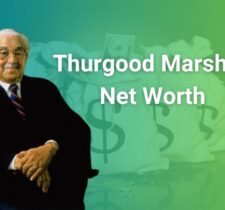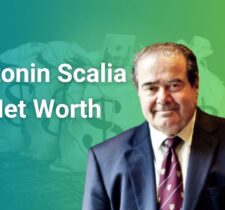John Adams, the second president of the United States and a founding father, left an enduring legacy—not just in politics and philosophy, but also in combining modest beginnings with financial acumen.
Over more than two centuries, historians and financial analysts have attempted to piece together his true net worth, adjusting for inflation and market shifts.
In this article, you’ll learn how much John Adams was worth (then and now), how he built his wealth, and what modern estimates reveal about his financial standing in U.S. presidential history
John Adams’s Wealth Unveiled
Early Roots: Humble Beginnings
John Adams was born in 1735 in Braintree, Massachusetts to a farming and shoemaking family. His upbringing was comfortable, but not wealthy. His father, John Adams Sr., worked as a farmer and shoemaker and also served as a deacon. Adams’s youth in colonial New England shaped a man who prized frugality and discipline.
He studied at Harvard, became a lawyer, and steadily built his professional reputation in Massachusetts law and public service. He did not inherit vast estates, nor did he rely on plantation income or enslaved labor. (Notably, Adams and his son John Quincy Adams never owned slaves.
Wealth Drivers: Law, Land & Marriage
Adams’s income came primarily from his law practice, public offices, and later real estate investments. Over time, he acquired the family homestead known as Peacefield in Quincy, Massachusetts, along with other landholdings. These properties formed the core of his asset base.
A key factor often cited in modern estimates is his marriage to Abigail Smith. Abigail came from a prosperous family and proved financially astute. During times of volatility, she engaged in speculative investments—such as purchasing post-Revolution government bonds when prices were depressed, which later appreciated. These actions boosted the family’s assets considerably.
Unlike many of his contemporaries, Adams did not leverage slave-based income or plantation economies to enrich himself. His asset growth relied on real estate, legal earnings, and prudent investment.
Peak Net Worth: Conflicting Estimates
Estimating a historical figure’s wealth in today’s dollars is inherently imprecise. Nonetheless, various reputable sources offer estimates for Adams’s peak net worth:
- 247WallStreet reports that John Adams likely reached about $28.7 million (inflation-adjusted) at his peak.
- CelebrityNetWorth lists him at $20 million (adjusted) in its ranking of richest U.S. presidents.
- Business Insider attributes him a net worth of $19 million (adjusted) in its presidential wealth survey.
- Yahoo Finance cites an estimate of $21.5 million for his peak wealth. (Yahoo Finance)
- InsideGov, using earlier 24/7 Wall Street data, places him at $19 million (in 2010 dollars, inflation-adjusted). (Times Union)
These different methodologies reflect variations in how each source treats land valuation, debts, inflation indices, and asset liquidity.
Why Estimates Differ
The discrepancies among these valuations trace to:
- Valuation of Real Estate
Land was a major component of Adams’s wealth. Some analysts use contemporary land prices, others use historical land values, creating divergence. - Choice of Inflation Index
Adjusting 18th century dollars to modern ones can use CPI, GDP deflator, or relative share of national wealth. Each gives a different conversion factor. - Treatment of Debts and Liabilities
Some historians deduct debts or mortgages; others omit them, depending on source quality. - Investment Timing Assumptions
Estimating how and when Abigail Adams invested government bonds or how Adams reinvested legal income yields different compound growth rates.
Given the wide array, many analysts converge around the $20 million to $30 million range for peak net worth in today’s dollars.
Net Worth in Context: Among U.S. Presidents
By most lists, Adams lands in the top ranks among early presidents (though far behind modern billionaires). For instance, the 247WallStreet compilation ranks George Washington first, then John Adams at second for early presidents.
But in the broader presidential sweep, dozens of presidents with inherited fortunes, business empires, or later book and speaking income now exceed his estimated wealth. For example, Donald Trump’s peak net worth dwarfs all others.
Still, for someone who never relied on largess from plantations or mass inheriting, Adams’s financial outcome remains remarkably solid.
Spending, Legacy & Asset Retention
After leaving the presidency in 1801, Adams returned to Quincy and resumed political involvement (notably in correspondence with Thomas Jefferson). He spent modestly and focused on preserving the family’s estate. He avoided extravagant expenditures, which helped protect the core assets such as Peacefield.
Adams’s ability to sustain his estate into his death in 1826 implies disciplined stewardship. That said, by the time he died, he had passed much of the house and investments to his heirs.
Modern Lessons & Observations
Adams’s story offers several lessons for readers interested in wealth dynamics among historical figures:
- Diversified asset base matters. His mix of real estate, legal income, and prudent investment gave him resilience.
- Marriage as partnership and investment. Abigail Adams’s financial decisions contributed materially to the family’s net worth.
- Value retention over growth. Rather than aggressive speculation, Adams prioritized maintaining what he built.
- Caution with historic adjustment models. Any inflation-adjusted figure should be viewed as a ballpark, not a precise truth.
Conclusion
John Adams did not enter public life with a fortune, nor rely on exploitative wealth mechanisms. Yet, through legal practice, real estate, and prudent investments, he built a lasting financial footprint.
Analysts estimate his peak inflation-adjusted net worth in the range of $20 million to $30 million—placing him comfortably among the wealthier early presidents. While he doesn’t compete with modern presidential billionaires, his disciplined approach and historical legacy speak to the possibility of achieving moderate prosperity through steady means.






